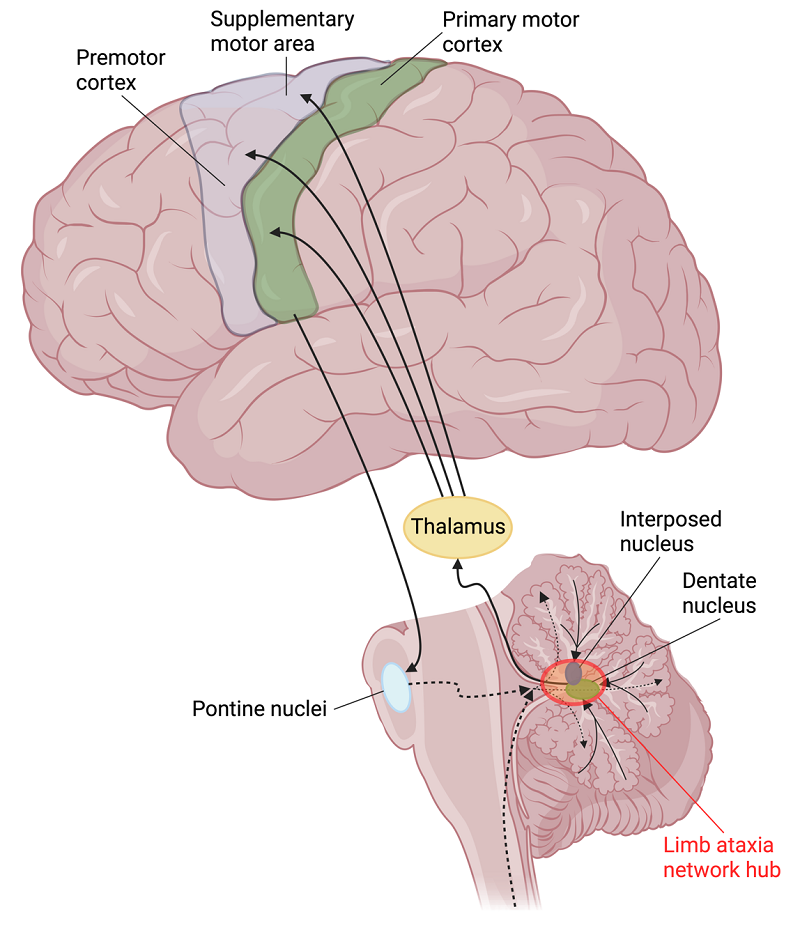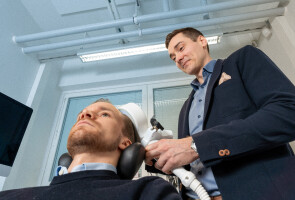A new study by the University of Turku and Turku University Hospital in Finland investigated the origin of ataxia in the brain of patients with stroke. A significant number of the stroke lesions in the patients were located outside the cerebellum.
A recent study by a Finnish research group found that, contrary to the information usually taught in medical schools, more than half of the cerebrovascular diseases that caused ataxia were located entirely outside the cerebellum and cerebellar peduncles. However, these lesions localized to a brain network, connected to the cerebellum.
Ataxia is a neurological condition characterised by difficulty in coordinating voluntary movements. Ataxia occurs in many neurological diseases, such as stroke, multiple sclerosis, and neurodegenerative diseases, or as a result of long-term excessive alcohol use. Treatment options for ataxia are currently limited.
“Ataxia is primarily considered to originate from damage to the cerebellum or to structures directly connecting the cerebellum to the rest of the central nervous system. However, ataxia has been observed to occur even without damage to these structures, which has left its neurobiological mechanisms partly unclear,” says Juho Joutsa, Professor of Neurology and the Principal Investigator of the research group at the University of Turku, Finland.
The study included 197 patients who had suffered a recent stroke and were still treated at the stroke ward at Turku University Hospital. In 18 percent of patients (n=35/197), stroke caused limb ataxia. To the surprise of the researchers, less than half (46%) of these patients’ stroke lesions intersected the cerebellum or cerebellar peduncles.
New imaging method helps localize neurological symptoms to brain networks
Doctoral Researchers Oliver Liesmäki and Jaakko Kungshamn and their colleagues at the University of Turku solved this mystery by using a relatively new brain imaging method developed at Harvard University that allows studying the brain connections disrupted by brain lesions.
The researchers showed that the lesions that caused ataxia localized to a brain network that extends beyond the cerebellum and its immediate connections. The nodes of this network are the dentate nucleus, globose nucleus, and emboliform nucleus of both cerebellar hemispheres.

Finally, the researchers tested the predictive value of the identified brain network in a separate dataset of 96 stroke patients and showed that the strokes that occurred in the network did indeed predict the development of limb ataxia in these patients.
The research findings change our understanding of the neural mechanisms of ataxia and are likely to have an impact on basic medical training.
“Ataxia is also a potential side effect of functional neurosurgery, and identifying the ataxia network may help to make these treatments safer in the future,” says Liesmäki.
The research results were published on 29 August 2024 in Neurology, one of the most prestigious scientific journals in the field of neurology.
More information:
Doctoral Researcher Oliver Liesmäki, MD, Msc (Tech), holies@utu.fi
Professor Juho Joutsa, MD, PhD jtjout@utu.fi



